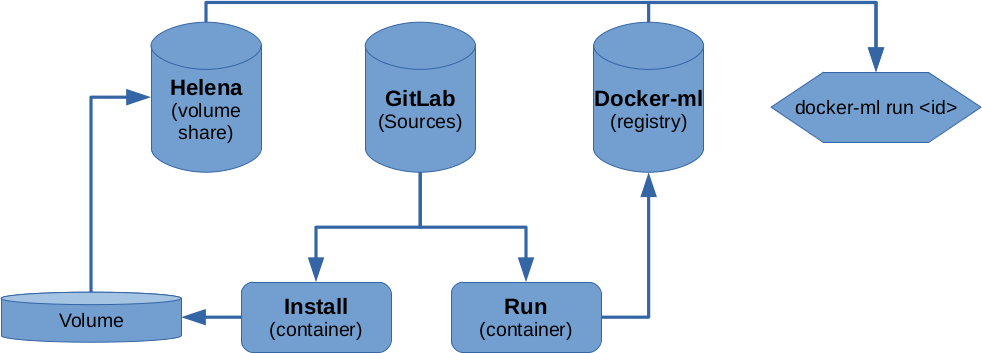docker-ml
docker-ml is a framework building on docker and adding management capabilities for volumes and easier handling for run options.

Quick Start
Create a new volume
Configure the install runoptions.txt
Build the install docker image
Run the install docker container
Install the tool onto the mounted volume
Configure the run runoptions.txt
Build the run docker image
Test the setup
(Push the volume to the volume share)
(Push the container)
Naming Conventions
The Gitlab Images Group is structured as follows
└──Images
├── Tools
│ ├── cadence
│ │ └── ... (cadence toos, e.g. MMSIM)
│ ├── synopsys
│ │ └── ... (synopsys tools e.g. primetime)
│ ├── misc
│ │ └── ... (unsorted tools)
│ ├── mentor
│ | └── ... (mentor tools e.g. questasim)
│ └── ...
├── Environments
│ └── ... (Environments images - collection of tools in one docker image)
├── Baseimages
│ └── ... (Baseimages for microlab to prevent future conflicts with updates of baseimages)
└── image-common (common content to be included into docker images)
Warning
The GitLab and docker image tags must comply with following conventions:
The path of the
rundocker image must be the same as the path of the repository in GitLab. e.g.https://gitlab.ti.bfh.ch/docker-ml/images/tools/misc/matlabtranslates todocker-ml.ti.bfh.ch/tools/misc/matlabTag the
rundocker image and GitLab repository both with the same, corresponding release tag. e.g.R2019bfor MatLab or5.12.2for Qt5 (if no release tag available usev<major.minor.patch>)Always add the corresponding version into the volume description. With that, always create a new volume for a new version.